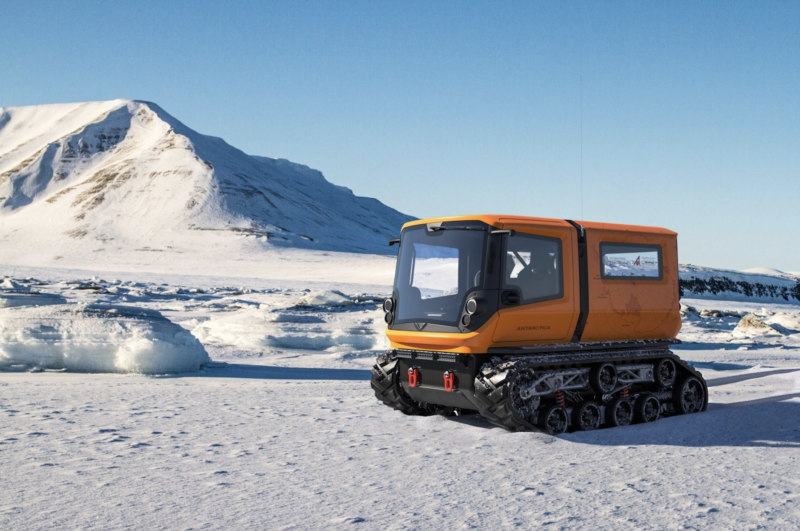High-performance electric mobility company Venturi has unveiled the world’s first ever zero emissions polar exploration vehicle, which will be deployed in December at the Belgian Princess Elisabeth research station in Antarctica.
Venturi, which started out in 1984 as a French automaker but has since been transformed into a Monaco-based high-performance vehicle manufacturer, has been working on a zero emissions polar exploration vehicle since 2009.
It was after a returning from a trip to Antarctica in 2009 that Monaco’s Sovereign Prince, Albert II, remarked to Venturi’s President Gildo Pastor that Antarctic research stations had no environmentally friendly or non-polluting vehicles.
The Prince Albert II Foundation asked Venturi to design a zero-emission solution for the Antarctic able to carry passengers and equipment to and from the region’s scientific research sites.
Venturi went on to design three successive versions of such a vehicle, including the original prototype which was unveiled in late-2018 and which was then tested in the Telegraph Creek region of Canada’s far north in 2019.
Last week, in advance of World Environment Day, Venturi presented the latest model to Prince Albert II, which will be heading to Belgium’s Princess Elisabeth research station in Antarctica in December, to begin operations from December 7.
“With the Venturi Antarctica, scientists are getting an efficient, easy-to-handle vehicle with very good performance,” said Gildo Pastor, President of Venturi.
“They will be able to carry out their research in optimum conditions, without polluting sites where the quality of analyses needs to be accurate down to the last molecule. We are proud to have developed a technological solution that fulfils the remit given to us by the Prince Albert II Foundation.”

Caption: Gildo Pastor, Venturi President, and Prince Albert II
The Antarctica polar exploration vehicle – unimaginatively named ‘Antarctica’ – has been able to navigate the dramatic technical constraints set to be imposed on a vehicle working in one of the planet’s most inhospitable regions.
Sacha Lakic, a designer with whom Venturi has worked closely for many years, tackled the technical constraints which focus on the vehicle’s thermal insulation, the size of the battery, and the chassis’ tubular structure.
Antarctica is also the result of meeting versatility and comfort for the vehicle’s occupants, and with its fold-down bench seats is able to carry up to six people along with equipment, and even a second battery to extend the vehicle’s initial range of 50 kilometres.
Boasting two 60kW electric engines and a 52.6kWh battery capacity, the Antarctica has a range of 50-kilometres and can operate in temperatures as low as -60°C and is also able to recharge from 2 to 18 hours.
The 50-kilometre range will be naturally affected by load and terrain, and in response to one Twitter user Venturi explained that “Range can be different according to the types of rolling resistance (ice or fresh snow, obstacles, climbs, flats…), it is thus difficult to give you a precise answer.”
The company assured that, “at the moment, the vehicle has validated 50 km of autonomy on road and without trailer,” and added that, “If we add a trailer, and if this one is on skis and that the vehicle runs on ice, the autonomy should be approximately the same one.”
In addition to being introduced to the Antarctica-bound model of the vehicle he had originally envisioned, Prince Albert II also received the original prototype vehicle which he drove in the vehicle’s testing phase in Canada in March of 2019.
By
Source: https://thedriven.io




